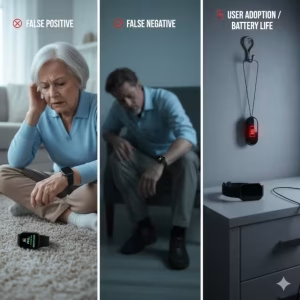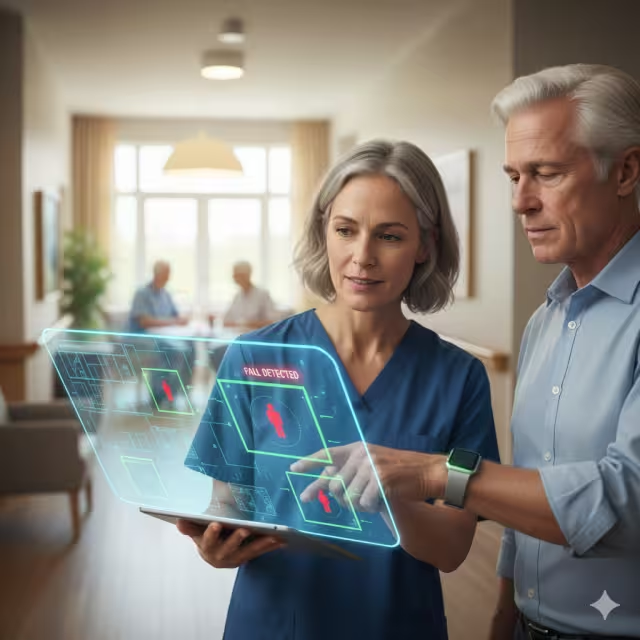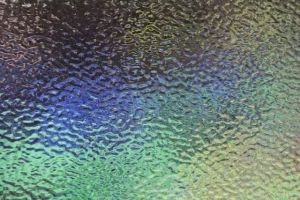In the complex field of geriatric care, physics and geography collide in a single, critical event: the fall. For seniors, a fall is not a minor incident. It is a major life event, one that often leads to a severe loss of independence, injury, and a sharp decline in health. The statistics are unforgiving. This reality presents caregivers, home care agencies, and assisted living facilities with a dual imperative. We must answer two questions, and we must answer them instantly: “Did a fall occur?” and “Where did it occur?”
Answering the first question is the job of fall detection technology. This technology, typically using advanced sensors, is designed to identify the unique physical signature of a human fall. But this technology alone is incomplete. A fall detection alert without context is a shout in the dark. It tells you what happened, but not where.
This is where the second technology, geofencing, provides the critical context. As a specialist in geospatial technology, I can confirm that a geofence, a virtual perimeter drawn on a digital map, is the key to transforming a simple fall detection alert into an actionable, intelligent response.
When you integrate precise geofencing with reliable fall detection, you create a powerful synergy. The system no longer just reports, “A fall was detected.” It reports, “A fall was detected in the bathroom,” or “A fall was detected at the base of the stairwell.” For a dementia patient, it can even warn, “A perimeter breach has occurred at the front gate,” before a fall detection event even happens.
This guide is a technical framework. It is designed for small businesses, assisted living facilities, and home care agencies that need to move beyond simple pendants. We will analyze the core components, provide a step by step implementation guide, and address the real world limitations you will face. This is how you build a safety net that is both smart and effective, leveraging the power of location to protect our most vulnerable.
Basic Technology Analysis: The Mechanics of Integration

To build this system, you must first understand its parts. A common mistake is to buy a device advertised for “fall detection” without analyzing the components that make it work. An integrated system has three distinct layers: the geofence (location), the fall detector (event), and the software that binds them (logic).
Component 1: The Geofence (The “Where”)
A geofence is not a physical object. It is a boundary of code. You define an area on a map, and a device is “aware” of whether it is inside or outside that line. The technology used to determine this location changes based on the environment.
- Outdoor (GPS Based): For large properties, gardens, or neighborhood “safe zones,” the system uses the Global Positioning System (GPS). A device worn by the senior communicates with satellites to find its exact longitude and latitude. The system then compares these coordinates to the geofence you created. This is highly effective for monitoring wandering and ensuring a resident is safe on the facility’s grounds.
- Indoor (Wi Fi and BLE Based): GPS signals are very weak and cannot pass through most roofs and walls. Indoors, GPS is useless. To solve this, we create “micro fences” using indoor positioning technology. This is often done by triangulating the device’s signal between multiple Wi Fi access points. An even more precise method uses Bluetooth Low Energy (BLE) beacons. You place these small, battery powered beacons in key rooms (like the bathroom, bedroom, and kitchen). The wearable device then reports which beacon it is closest to. This is how a system can know, with room level accuracy, where the fall detection event happened.
Component 2: The Fall Detector (The “What”)
This component is responsible for identifying the fall itself. A simple “help button” is not fall detection. A true fall detection system is automatic, as many seniors are unable to press a button after a serious fall.7 This automation is achieved in two primary ways.
- Wearable Sensors: This is the most common form of fall detection. Devices like pendants, watches (such as an Apple Watch or Garmin), or belt clips contain a suite of sensors.
- Accelerometer: This is the most important sensor for fall detection. It measures sudden changes in velocity, or speed. A fall involves a rapid, uncontrolled acceleration toward the ground. The accelerometer detects this spike.
- Gyroscope: This sensor measures orientation and tilt. It helps the system understand the person’s posture. A true fall detection event involves both a speed spike (from the accelerometer) and a change in orientation (from the gyroscope) as the person lands horizontally.
- Barometer: Some advanced fall detection systems include a barometer, which measures air pressure to detect sudden changes in altitude, like falling down a flight of stairs.
- Ambient (Touchless) Sensors: A major challenge with wearable fall detection is user compliance. Residents may forget to wear the device or refuse to charge it. Ambient systems solve this. These devices, like those from Vayyar, are mounted on the wall. They use low power radar to monitor a room. They do not use cameras, which protects privacy. Instead, they see a 3D radar “image” of the room and can identify the posture of the person inside. If it “sees” a person suddenly move from a standing position to a prone position on the floor, it triggers a fall detection alert.
Component 3: The Integration (The “How To” Logic)
The hardware is impressive, but the software logic is what makes the system smart. This integration is what separates a professional system from a consumer gadget. When a fall detection event is triggered, a simple but critical chain of events occurs in less than a second:
- Event Trigger: The accelerometer and gyroscope in the wearable device detect a high G force impact followed by a lack of movement.
- Location Query: The device’s software immediately asks, “Where am I?”
- Location Answer: The device’s GPS (if outside) or Wi Fi/BLE radio (if inside) finds its location. For example, it might report “GPS coordinates [X, Y]” or “Nearest BLE Beacon: ‘Room 204 Bathroom’.”
- Geofence Cross Reference: The central software platform receives this data. It checks the location against the geofences you created.
- Alert Protocol: The system then sends a highly specific alert to the caregiver’s app or Nurse Call System.
- Bad Alert: “Fall Alert for John Smith.”
- Good Alert: “CRITICAL FALL: John Smith detected in ‘Hazard Zone: Stairwell’.”
- Smart Alert: “FALL DETECTED: John Smith in ‘Safe Zone: Bedroom’.”
This integration provides the context needed for an appropriate response. A fall detection event in a bedroom may be less urgent than one in a bathroom, and a fall detection event combined with an “Exit Zone” breach is a five alarm emergency.
A Step by Step Guide to Setting Up Geofences for Fall Detection

Understanding the technology is the first step. Now, you must implement it. This is a procedural guide to building your integrated fall detection and geofencing system.
Step 1: Hardware and Software Selection
Your first choice is the most critical: what combination of hardware and software will you use?
- Choosing Your Fall Detection Device:
- Wearable Pendants/Watches: These are the industry standard. They are reliable for fall detection, are often waterproof for use in showers, and include a manual SOS button. Their main weakness is battery life and user adoption. You must have a strict protocol for charging them, or they will fail.
- Ambient Sensors (Radar): These are excellent for high risk areas like bathrooms, where falls are common and users may not be wearing a device. They are more expensive upfront and only cover a single room, but their fall detection is “always on” and requires no action from the resident.
- A Hybrid Approach: The best solution is often a hybrid one. Use wearable fall detection devices for general monitoring and supplement with ambient fall detection sensors in high risk, private areas like bathrooms.
- Choosing Your Management Platform (Software):
- The device is just a sensor. The software is your command center. This is the app or web dashboard where you will draw your geofences and set up your alert rules.
- Look for a platform that is easy to use. Can you draw a fence on a map easily?
- Check the alert options. Does it support push notifications, SMS texts, and automated calls?
- Does it have an open API? This is a technical point, but it’s important if you want to integrate the fall detection alerts with an existing system, like a nurse call light or an electronic health record (EHR).
Step 2: Defining Your Virtual Boundaries (The Geofences)
Once your hardware is active, you must “teach” the system the layout of your facility or home. This is where you draw your geofences. Do not just draw one big fence. A smart system uses multiple, layered fences.
- “Safe Zones”: These are the primary areas where residents are expected to be. This includes their personal room, the dining hall, common areas, and perhaps a secure garden. A fall detection alert inside a Safe Zone is a standard alert.
- “Hazard Zones”: These are areas where a fall is more dangerous or requires a more immediate response. You should create specific, small geofences for these locations.
- Examples: All bathrooms, all stairwells, the kitchen, and any areas with uneven flooring.
- Logic: You will later configure alerts from these zones to be “High Priority.” A fall detection event here should trigger a different, louder, or more immediate alert.
- “Exit Zones” (or “Wandering Fences”): This is the most critical fence for residents with dementia or Alzheimer’s. This fence is the outer perimeter of your property: the doors, the gates, the driveway.
- Logic: An alert from this fence is fundamentally different. If a resident crosses this line, you should receive an “Elopement Alert” or “Wandering Alert” instantly, whether fall detection was triggered or not. If a fall detection event also occurs in this zone, it is the highest possible priority: “CRITICAL: Fall detected AND Exit Breach at ‘Front Gate’.”
Step 3: Configuring Alert Protocols and Escalation
A system that sends 100 alerts to 10 people is just noise. A professional system sends the right alert to the right person at the right time. This is your alert protocol, or “escalation path.”
- Who Receives the Alert?
- Example 1: Home Care: The primary alert should go to the on duty caregiver’s phone. The secondary alert (if unanswered) should go to the resident’s adult child or a neighbor.
- Example 2: Assisted Living: The primary alert must go to the on duty nurse’s station or a dedicated mobile device. It should also be logged in the central platform.
- What Type of Alert?
- Standard Fall Detection Alert (in Safe Zone): Push notification to the caregiver app.
- Hazard Zone Fall Detection Alert (in Bathroom): A persistent, loud alarm on the caregiver app and a notification on the central dashboard.
- Exit Zone Breach: An SMS text message, push notification, AND an automated phone call to the facility manager and all on duty staff. This alert should require a manual “clear” from a supervisor.
- Setting Up the Escalation Path:
- What happens if an alert is missed? The system must escalate.
- Rule Example: “1. Send High Priority fall detection alert to Nurse A. 2. If Nurse A does not acknowledge the alert within 60 seconds, send the alert to Nurse B. 3. If Nurse B does not acknowledge within 90 seconds, send the alert to the Shift Supervisor and the Facility Director.”
Step 4: System Testing, Calibration, and Compliance
You cannot “set it and forget it.” This system protects lives, and it must be tested relentlessly.
- Addressing False Positives: A “false positive” is when the fall detection system triggers an alert, but no fall occurred. This is often caused by a resident dropping the device or tossing it onto a bed. While some false positives are unavoidable, you can calibrate the sensitivity of many fall detection devices. A less active resident may need a more sensitive setting, while a very active resident may need a less sensitive one.
- Walk Testing the Geofences: Do not just trust the map. You must physically walk the property with the device. Watch the dashboard. Does the device correctly switch from “Bedroom” to “Hallway” to “Dining Room”? Are there any Wi Fi “dead zones” where the device loses its indoor location? You must find and fix these gaps, perhaps by adding another Wi Fi access point or a BLE beacon.
- HIPAA and Data Security: This system collects protected health information (PHI), specifically, the location and health status of a resident. All this data must be HIPAA compliant. This means the data must be encrypted, stored on a secure server, and only accessible to authorized personnel. You must ensure your software vendor is HIPAA compliant.
Key Limitations and Data Integrity

As an expert focused on data integrity, I must be direct: no technology is perfect. A good implementation is not just about understanding the benefits; it is about understanding and planning for the limitations. Many systems fail here because of unrealistic expectations.
Challenge 1: Accuracy and Signal Loss
The most common complaint is, “The location was wrong!” This happens.
- GPS Drift: In outdoor settings, GPS signals can bounce off large buildings, creating an “urban canyon” effect. This can cause “GPS drift,” where the location on the map is off by 10 to 50 feet. A resident standing on the sidewalk might appear to be in the street. Good systems mitigate this by blending GPS data with Wi Fi signals to “snap” the location to a more accurate point.
- Indoor Gaps: Indoors, the system is only as good as your Wi Fi or BLE beacon coverage. If there is a “dead zone” in a hallway or between rooms, the device’s location will be unknown, or it will report the last known location, which may be incorrect. This is why walk testing (Step 4) is not optional. You must find and fill these gaps.
Challenge 2: False Positives vs. False Negatives
This is the single biggest challenge in fall detection technology. You must balance two types of errors.
- False Positives: This is when the fall detection alert goes off, but the person is fine. As mentioned, this is often caused by dropping the device. This is annoying for caregivers and can lead to “alert fatigue,” where staff starts to ignore alerts because they assume they are false. Using a combination of accelerometer and gyroscope data helps reduce this, as a dropped device does not have the same “post fall” signature as a person.
- False Negatives: This is the more dangerous failure. A false negative is when a real fall occurs, but the fall detection system fails to trigger an alert. This is most common in “slow slide” falls. The fall detection sensors are calibrated to find a sudden, hard impact. If a resident feels faint, slumps against a wall, and slowly slides to the floor, there is no impact spike. The system may not see it. New algorithms are getting better at detecting this, but no fall detection system can guarantee 100% detection. This is why the technology augments human care, it does not replace it.
Challenge 3: User Adoption and Battery Management
This is the human element. The most advanced fall detection system in the world is a useless piece of plastic if it is sitting on a resident’s nightstand instead of being worn.
- Refusal to Wear: Some residents find the devices “stigmatizing” or uncomfortable. This is a human problem, not a technical one. The solution involves better device design (making them look like jewelry or a watch) and compassionate communication from staff.
- Battery Life: This is the Achilles’ heel of all wearable fall detection. These devices are small and have small batteries. They must be charged, often every night. This creates a massive logistical burden on staff or family. A clear protocol is required: Who collects the devices? Where are they charged? Who ensures the resident is wearing the correct device the next day? This is another reason why ambient, touchless fall detection in high risk rooms is such an attractive solution.
Challenge 4: Privacy and Ethical Considerations
We are tracking the location of human beings. We cannot do this lightly.
- The Privacy Balance: Residents, even in a care facility, have a right to privacy. The key is transparency. Residents and their families must be clearly informed that location and fall detection monitoring are part of the facility’s safety procedures.
- Cameras vs. Radar: Camera based fall detection systems exist, but they are an extreme invasion of privacy, especially in bedrooms and bathrooms. This is why radar based ambient systems (like Vayyar) are a superior choice. They detect motion and posture without capturing a visual image, providing security while respecting dignity. Always prioritize the least invasive technology that achieves the safety goal.
Conclusion: Geofencing as a Tool for Augmenting Human Care
We have covered the physics of the sensors, the geography of the virtual fences, and the logic of the alert protocols. As we have seen, setting up geofences for fall detection is not a simple, single action. It is the careful design of an integrated IoT (Internet of Things) ecosystem. It is a system of hardware and software that must be precisely calibrated and constantly maintained.
The core value of this integration is not just the alert; it is the context. Knowing “what” (a fall) and “where” (in the bathroom) transforms an ambiguous emergency into an actionable plan. It reduces response times from minutes to seconds. It provides staff with the exact information they need to act decisively, protecting residents and providing peace of mind to their families.
This technology, however, is not a replacement for human caregivers. A fall detection system cannot provide comfort, assess an injury, or help a person to their feet. This technology is a force multiplier. It gives good caregivers the ability to be in the right place at the right time, armed with the right information. It is a tool that augments human attention, allowing skilled staff to focus less on patrolling hallways and more on providing compassionate, one on one care.
If your organization is ready to move beyond basic alert pendants and implement an intelligent, integrated fall detection and geofencing solution, contact WebHeads United. We can provide the technical consultation and implementation support needed to build a smarter, safer environment for the people in your care.






